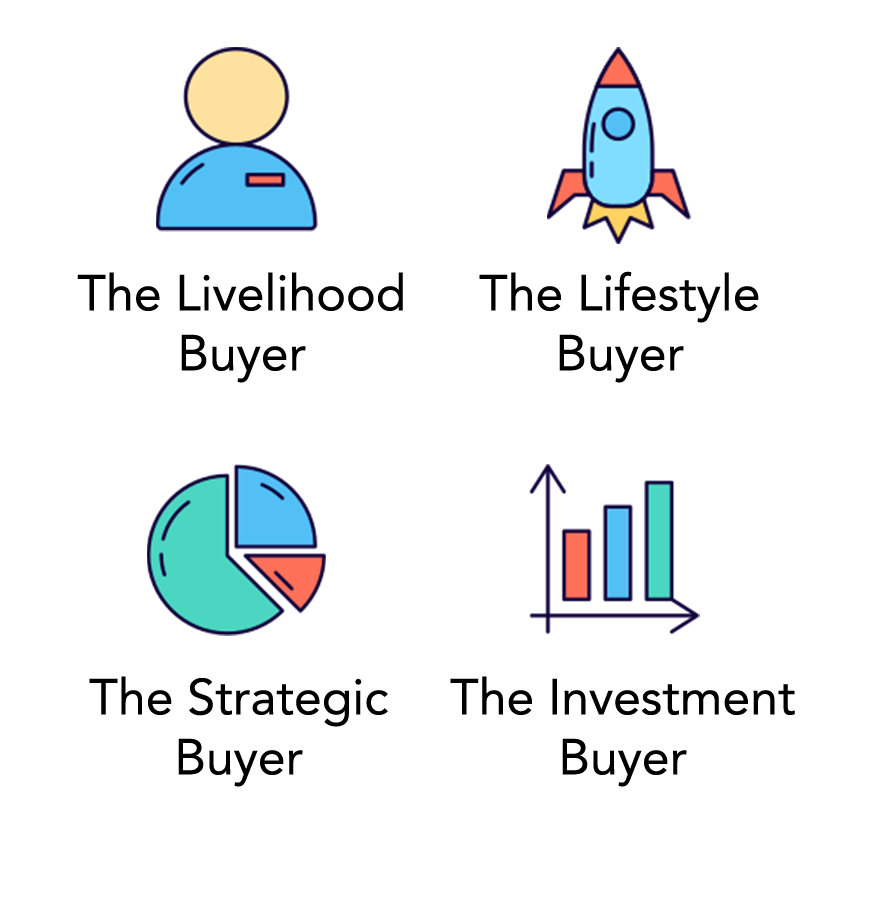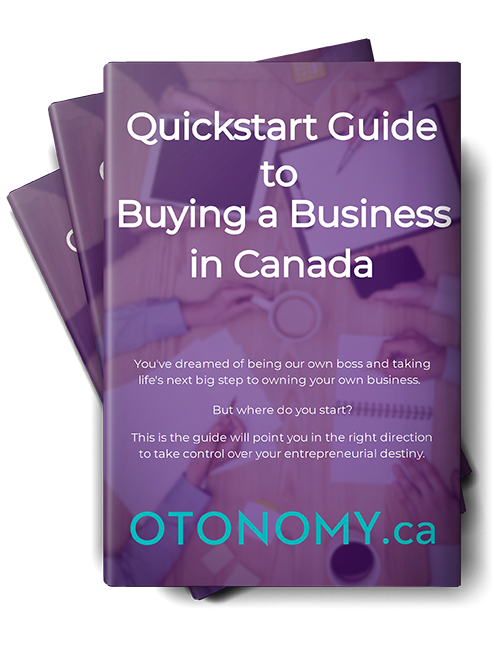The competition to gain potential buyers’ attention has never been fiercer. Buyers today have more information at their fingertips leading them to now making their own decisions about a company before seeking professional assistance if they seek assistance at all. On top of this, Buyers are often more attached to a particular company and less open to other options during this research process.
So how do you make a strong connection with people looking to buy a small business? How can you cut through the noise and have potential buyers spend more time looking at your specific listing?
If you’re preparing to sell your business, you recognize the need for a successful for-sale listing. But unless your niche is copywriting, you may struggle to get started writing up the document.
Apart from attractive, high-quality photos, your first opportunity to impact the reader will be your Headline or Title. If you are unable to catch the eye of a potential buyer during their first glance, then it doesn’t matter what is in your executive summary or financials. But of course, there’s more to writing up your business-for-sale listing than the headline. Read on for a step-by-step guide to writing up your successful listing.
1: Identify Your Ideal Buyers, Their Motivations, and Determining the Right Keywords
The first key to a successful business listing is to identify the ideal buyers. You need the right people looking at your business: people who are the most likely to be motivated to own what you’re selling. It’s a common mistake to believe that everyone wants the same thing. If you speak with a banker or valuator, they will tell you that it’s all about the viability of the company. Of course, this is important. Buyers want to know that they are making a sound investment. However, take a moment to figure out what motivates a particular set of buyers and you will write a far more effective listing. If you are targeting the wrong market, it’s already a lost battle.
In the introduction, I wrote having great pictures and the right headline will improve your odds of attracting potential buyers looking at your listing. Identifying the motivations of these buyers will help inform how your write your headline and possibly, what pictures to include.
The 4 different buyer motivational types


Brief Description
Someone who is looking to purchase a job or a salary. They may be new to the country and focused on how they can support their family.
Primary Drivers
- Security
- Steady Rate of Return
- Possibly a ‘turn-key’ business
- Less about strategic growth and more about stability
Writing Points
- “Ongoing, well-established business”
- “Steady, repeat business”
- “Re-occurring revenue stream”
- “Reliable cash flow”
- “Fantastic income opportunity”
- Offering training & financing is also highly sought after

Brief Description
Also known as the ‘passionate buyer’, they are attracted to the idea of owning their own business and look to be ‘one’s own boss’.
Primary Drivers
- Looking for meaning, purpose or engagement
- Creative control
- Creating legacy
- Something outside of the traditional 9 to 5
Writing Points
- “With the right person in control, this business can go in multiple directions”
- “Be the one to make the decisions”
- “The company can be taken to the next level by someone who can introduce new technologies”
- “Social Conscience”

Brief Description
These buyers tend to think more strategically about the company’s future.
They are sometimes viewed as ideal buyers as they are already familiar with your business, can evaluate it accordingly and pay a premium price if the business aligns well with their long-term strategy
Primary Drivers
- Expanding their reach or dominance in a local market
- Long term focus
- Augmenting current services
- Eliminating competition
- Synergies between one or more companies
Writing Points
- “Year over rear growth”
- “Strong/existing client base”
- “Opportunities for expansion”
- “Long term contracts in place”
- “Lean operations”

Brief Description
An Investment buyer may sound similar to a strategic buyer, and while they have some similarities, they also come with some unique differences.
These individuals tend to have significant wealth and are more risk-averse. They may be looking at diversifying their income by buying one or more small businesses.
They are focused on the rate of return and tend not to be involved in the day-to-day operations unless they see an opportunity to turn a poor-performing company around.
Primary Drivers
- Reduced risk
- Diversifying their existing income
- Owning multiple businesses (potentially)
- Hands off, not owner-operated
Writing Points
- “Steady, reoccurring revenue stream”
- “Top tier management team operating independently of ownership”
- “Developed, documented and systemized business in place”
- “Automation in place”
Spend time identifying your ideal buyers. You can do this by figuring out who will want to sell your goods or provide your current services to another person. Remind yourself why you started this business and aim to understand your customers. That information should help you find those that will be interested in buying.
Once you’ve done this, you need to find the right way to communicate with them. Using the right keywords is crucial. Avoid the hard sell. Don’t use fluff to make your business sound fancier than it is. Buyers can typically tell when you are ‘over pitching the business.
Now that you understand your buyers better, you can compose a killer headline that will catch their attention. Otonomy.ca allows 50 characters to present your listing to potential buyers so the more you understand them, the greater chance of bringing them in to read your Executive Summary.
2: Describe The Big Picture/Executive Summary
Now you need to write your executive summary. Here, your goal is to deliver a concise yet thorough overview of your business that paints it in a compelling light. Your aim should be to focus on what your buyers will care about, the facts and figures. Refer back to the Writing Points in the previous section.
Remember not to oversell or make some vague promises about how it will magically become a profitable business in the next year. If you wish to keep the business confidential, you can do this by keeping company-specific details (location, company name, unique clients) out of the summary.
3: Write About Your Company’s History
You want to inform your potential buyers of the key points in your business history. This way, it is easier for them to measure the growth based on your trajectory. It also gives them a chance to forecast.
Don’t be scared to write about periods of losses. You want to be honest without being pessimistic. Everyone knows that no business is perfect, what they want is the inputs they are looking for. If you don’t know how to slim fit the fluff all the way down to the nitty-gritty that makes up your history, you may want to consider hiring a professional copywriter. Never be afraid to have the copy ready by friends, family, and associates. If you are direct with the type of feedback you are looking for, they are often quite good for that second pair of eyes and will let you know if you are getting off track or being too vague.
4: Define What You’re Selling As Clearly As Possible
Remember what you are selling. You aren’t selling your product in and of itself. You aren’t selling yourself either. You are selling the entire business without you at the helm. Focus on that.
Remember that the buyer’s aim is not your great product (or service), but what that product (or service) has done and can do for the business.
Also, don’t pitch yourself. If you overemphasize your role and importance in the business, you only make the company look weak without you.
What you want to do is outline the opportunities for growth while clearly defining what is on the market— the business. This, along with its existing structures, can help you paint the picture you need for your business to look buyable.
5: Don’t Forget to Invest in High-Quality Photos
No, this is not vain nor a distraction. Whether you believe it or not, the sort of content you put out goes a long way to determine how potential buyers perceive you. And photos are top content if you use them well.
When you create a business-for-sale listing, you want the pictures to look good because they represent what you’re selling. Even if it requires a splurge, go for it. It can make the difference between your listing and that of the next business. There are however free stock websites such as pixabay and unsplash to name just a couple.
If confidentiality is important to the sale of your business, it is perfectly fine to download a professional stock image as long as you have the right to use the image and it does not misrepresent your business.
Final Verdict
Everyone that comes on a listing page has a different reason for considering buying a business. Many of the examples that we highlighted earlier can help you compose your listing by speaking speak directly to the buyer’s motivations. It can also be effective by reaching them on a personal level. But you can be sure that everyone wants a company that looks like it can be made successful.
Whittle down all the years of labour you’ve put into your business into punchy valuable intelligence that can get your business moving off the market into the hands of a buyer that knows exactly what they paid for.
And remember, you are not only selling a business and investment, you may also be selling someone their livelihood and their dream to be their own boss.




